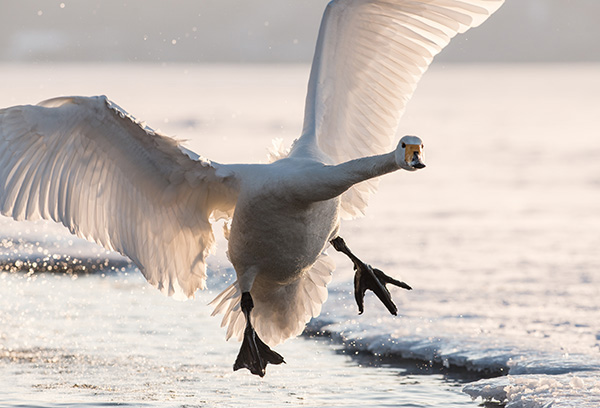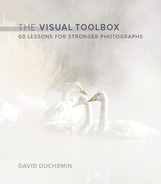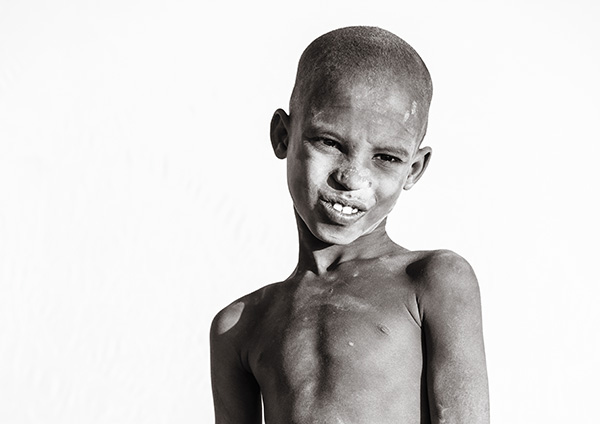Lesson 30. Quality of Light: Further Considerations
If you read the previous lessons’ imagined scenario all the way through without stopping to do your homework, you’d have made three photographs in a couple of minutes, much less time than it took for me to write it or for you to read it. The sun wouldn’t have changed enough to notice it. The tree was the same tree. The field, too, remained the same. And yet in those brief moments you’d have created three very different photographs. You’d likely have composed those photographs differently, as each new scenario gave you new possibilities and drew your eye in new directions, placing the side-lit tree to the left of the frame, for example, to give room for the pull of that great shadow.
Nikon D3s, 24mm, 20 seconds @ f/10, ISO 400
This boat on Lake Turkana in Northern Kenya would be pretty unattractive under midday sun, but in the soft light of twilight it’s a very different scene with a very different feel. It’s all about light.
You might have chosen to close your aperture to f/16 when you photographed that backlit tree, knowing the tighter aperture might make a starburst of the points of light shining through the canopy. You might have shot the first scene much wider and given more importance to the clouds, since the light on the tree itself lacked drama.
Such is the effect of the direction of light, and where the light remains unchangeable, there’s often the possibility of moving the camera. There are a few other things to consider, and they too change the look and feel of the photograph considerably.

Nikon D800, 300mm, 1/1600 @ f/7.1, ISO 400
Light passing through the feathers of this whooper swan creates a very different mood than if the light had simply reflected off them. I’ll shoot transmitted light any chance I get!
The first is this: The position of the sun relative to you and your subject will create shadows. These shadows are more than merely the “areas where the sun don’t shine.” They’re powerful indicators to us about how to read a photograph, helping us to establish the logic of the scene and place ourselves within its reality. It’s one of the reasons (you knew I’d go off on a tangent about this!) that high dynamic range tools—when in the hands of overly enthusiastic novices—make surreal images that photographers like me react to so strongly (and negatively). It’s not the fault of the tool, but the removal of strong blacks, the mystery of the unseen, and the visual clues we rely on shadows to provide that makes us feel uneasy. We’ll revisit the discussion about shadows later, because they’re important and they can be used to create depth, shape, line, and mood. For now, just learn to observe them, and see how the presence of shadows can help you guess where the light might be coming from.
Reflected and Transmitted Light
The second consideration is whether the light is shining on a subject, creating reflected light, or shining through a subject, creating transmitted light. Neither is better than the other, per se—they are what they are—but they both contribute a different aesthetic. As does a combination of the two. Reflected light is responsible, of course, for reflections and specular highlights, the texture created by shadow on a rough surface, or the catchlight in the eye of a child. If the subject is opaque, and even dimly lit, it’s reflected light. Light does not, as a rule, shine through stones. But with less opaque subjects, like a leaf, and depending on the direction of the light, the light can go from bouncing off the surface to shining through it. The difference is not unlike looking at a small printed photograph and then looking at a transparency or slide on a light table. On the backlit slide, the colors can be richer and more vibrant, and seem to glow from within. How we experience the two photographs can be quite different.

Nikon D800, 145mm, 1/100 @ f/5, ISO 1000
Look at the shadows: which light is soft and which is hard? How does that affect how you feel about each portrait?
Intensity of Light
Regardless of direction, not all light is the same. There are subtle nuances of difference, and so much depends on what the light is bouncing off, or through, or what combination of the two is happening. One of the further distinctions that’s so important to be able to recognize, and play with, is whether the light is hard or soft.
Hard light, coming from any direction, is undiffused; it comes straight from the source and hits the subject head on. The easiest way to distinguish hard light from soft is in its effect, notably in the shadows it creates. Their edges are harder, the contrast greater; these shadows add more drama but can be hard to control in portraits. Softer light—light found on the shady side of the street or on a cloudy day—will lack these hard-edged shadows, and the colors will be less washed out. Neither is good nor bad. They’re just different, and learning to see them and make use of them according to your intent for the photograph is important.


